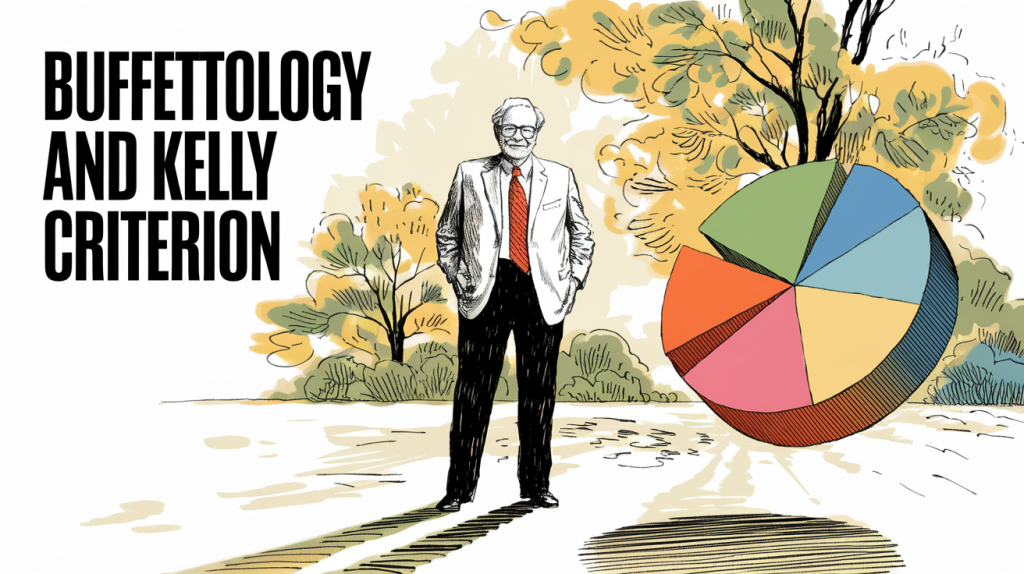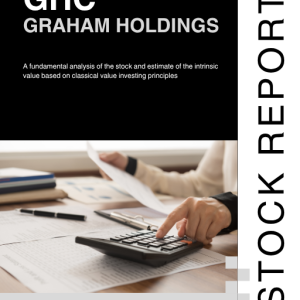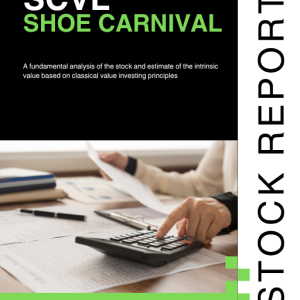
Get the Buffettology book Now!
Warren Buffett is famous for his quotes, his calm temperament, and his legendary long-term holdings. But what separates him from almost every other investor isn’t just what he buys—it’s how much he buys. Behind the scenes, Buffett’s approach to capital allocation mirrors a little-known mathematical formula used by gamblers and quantitative traders: the Kelly Criterion.
You won’t hear Buffett name-drop Kelly. But once you understand it, you’ll see his portfolio through a new lens—and more importantly, you’ll learn how to position your own portfolio to maximize compounding without blowing up.
Other legendary investors such as Ed Thorp, Mohnish Pabrai and Bill Gross are rumored to use the Kelly Formula
Let’s unpack the formula behind the world’s greatest investor and show how you can use it in your value investing strategy today.
What Is the Kelly Criterion—and Why Should You Care?
Before we get into Buffett, you need to understand the simple logic behind Kelly sizing. The Kelly Criterion allocates capital based on your edge and risk. It was developed in the 1950s to determine the optimal size of bets in gambling, but its mathematical logic fits investing like a glove.
The idea is this: if you have a positive expected return and can estimate your odds with reasonable confidence, there is an optimal bet size that maximizes long-term geometric growth. Bet too little, and you leave returns on the table. Bet too much, and you risk ruin.
Originally used in blackjack and horse betting, Kelly was quickly adopted by investors like Ed Thorp and Bill Gross. It maximizes your portfolio’s growth rate while minimizing the risk of catastrophic loss.
So why does this matter to you? Because every time you add a stock to your portfolio, you’re making a bet. The only question is: are you sizing that bet optimally?
Buffett’s Portfolio Isn’t Diversified—It’s Kelly-Optimized
If you’ve ever looked at Berkshire Hathaway’s portfolio, you’ll notice something striking. It’s not diversified the way most financial advisors recommend. In fact, Apple alone makes up nearly half of Buffett’s public equity holdings.
This isn’t laziness or oversight. It’s intention. Buffett once said, “If you’re in the lucky position where you have one great idea, it’s better to act strongly on that idea than dilute it.”
That’s the Kelly Criterion in action. Kelly tells you to bet big when you have a high probability of a large payoff. Buffett does this intuitively, building concentrated positions when the odds are overwhelmingly in his favor and the downside is limited.
This explains why he often waits years to invest, only to go in size when a real opportunity arises. Buffett might not run the calculations (and I am not sure that he doesn’t run calculations), but the principles of Kelly are deeply embedded in his approach.
How to Use the Kelly Formula in Your Own Portfolio
You don’t need a supercomputer to apply Kelly sizing. Here’s a simplified approach any serious investor can use:
Start by estimating your expected return. This comes from your intrinsic value estimate versus the current price. Next, assess the risk. You can use historical volatility, standard deviation, or your own assessment of downside potential. Finally, consider how this new position correlates with the rest of your portfolio.
The Kelly formula in its pure form is:
Fraction to invest = Expected excess return / Variance
But in practice, most investors use a modified Kelly or half-Kelly to account for estimation error and mitigate the volatility a full Kelly may introduce in the portfolio.
You can also use a Kelly matrix if you’re building a multi-stock portfolio. This matrix considers all pairwise correlations and expected returns to produce a growth-optimal allocation across all holdings.
This is the exact approach I use in the Premium and Founder’s Club portfolios. Every position is tested for its risk-adjusted contribution to the whole, not just whether it’s a good stock on its own.
The Risks of Misapplying Kelly—and How to Avoid Them
Kelly is powerful, but it’s also dangerous if misunderstood.
Overestimating your edge leads to oversizing. Underestimating risk leads to complacency. Using outdated or static assumptions guarantees you’re working with stale data. And ignoring correlations can blindside you when several “independent” positions move together.
To avoid these traps:
- Update your expected returns and risks frequently, especially after earnings reports or major news. I generally do this on a monthly basis. This will shift your allocations.
- Set caps on max allocation per position. If you do this, you can scale down the allocations on other stocks in the portfolio proportionately.
- Use realistic assumptions in your models. When in doubt, be conservative. This can be hard in the beginning but over time as you collect data about your historical performance, you will have much better sense of your “edge”
- Incorporate common sense: sometimes a small position is the right size even if the math says otherwise. There are a number of times when Kelly calculation encourages me to borrow money on margin and load up. I do not do this, and therefore I scale down.
The Kelly Criterion isn’t a rigid rule. It’s a framework to think clearly about sizing bets in a world of uncertainty.
Buffett’s Legacy and the Edge You Still Have
Buffett doesn’t talk about Kelly because he doesn’t need to. His edge is the accumulated wisdom of decades of pattern recognition and disciplined temperament. But for the rest of us, Kelly gives us a roadmap for rational aggressiveness.
It lets you size your positions like a business owner, not a speculator. It forces you to think in terms of probabilities, not just narratives. And it pushes you to allocate capital where it matters most, rather than sprinkling it around for false diversification.
Even if all you do is to set a few ground rules for your investment process, you will get closer to a Kelly optimal portfolio. Here are a few rules to get you started:
- Diversify – do not invest in more than one stock from the same industry/sector
- Invest more in higher conviction, higher potential profit ideas. Invest less in more speculative ideas, or ideas with less profit.
- Think about a blend of risk and rewards. A high potential profit idea should get low allocation if the risk of the idea not working out is also high. Want to invest in Quantum stocks? A small allocation is appropriate, even if the potential profits can be tremendous.
- Always estimate potential profits – this means you need to conduct due diligence and determine the intrinsic value of the stock.
- As stock price moves up and the future profit estimate shrinks, you may want to reduce allocation. Similarly if a good value stock becomes cheaper, you may want to add more (as the future profit estimate is now higher).
These are all rules you may know as many value investors including Buffett have discussed these a number of times. Now you know that these all align with the Kelly Formula.
If you’re serious about compounding—and if you’re reading this, you are—then it’s time to think not just about what you invest in, but how much.
Ready to Build a Growth-Optimal Portfolio?
Inside the Premium and Founder’s Club memberships, I apply this framework to every stock we buy—based on fundamentals, expected return, and risk. No gut-based guessing. Just systematic compounding.
If you want to build a portfolio the way Buffett actually does—not the way most people think he does—this is your next step.
Featured products

Shailesh Kumar, MBA is the founder of Astute Investor’s Calculus, where he shares high-conviction small-cap value ideas, stock reports, and investing strategies.
His work has been featured in the New York Times and profiled on Wikipedia. He previously ran Value Stock Guide, one of the earliest value investing platforms online.
Subscribe to the Inner Circle to access premium stock reports and strategy insights.
Featured in:











